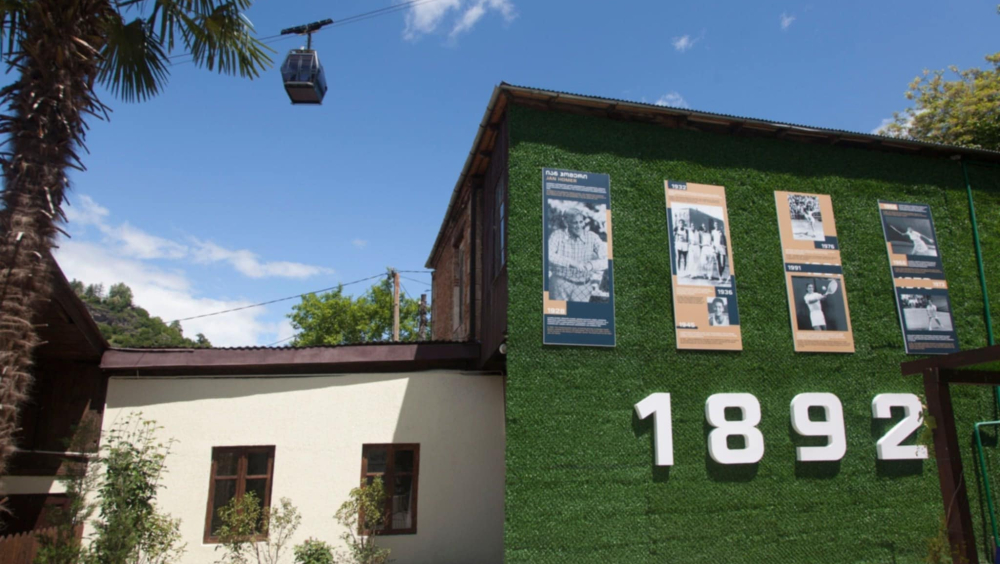Europe in Chiatura at the Dawn of the Last Century
The significance of industrial heritage is widely recognized on an international level. “The research, preservation, adaptation, and conservation of industrial heritage are priorities in the cultural and academic activities of many countries.” Georgia's rich cultural heritage has been extensively studied from various perspectives. However, the country’s industrial heritage remains largely overlooked by professional researchers. “Unfortunately, the architectural and engineering structures from the early 20th century, built for industrial purposes in 19th-20th century Georgia, remain unappreciated and have yet to become subjects of systematic study.”
German geologist and renowned Caucasus and Iran researcher, a full member of the St. Petersburg Academy of Sciences, Hermann Abich, lived in the Caucasus for 37 years. His research covered stratigraphy, paleontology, geotectonics, seismology, geomorphology, and glaciology. Abich is considered the pioneer of the scientific study of Chiatura’s manganese deposits. In 1858, he published an extensive article on the Chiatura deposit in the Mining Journal. Soon after, a brochure about the Chiatura deposits was published in English, French, German, and Russian. As a result, representatives from the Krupp factory and the Gute Hoffnung iron mines in Westphalia, as well as representatives of Wechter & Co., arrived in Chiatura, extracting and exporting 54 poods of manganese to the market. This marked the first entry of Chiatura’s manganese onto the international market, creating a major stir due to the high quality of the resource.
The dissemination of this information had a profound impact, and soon Chiatura was filled with foreign entrepreneurs—French, Germans, Poles, English, Italians, and others. However, little is known about these entrepreneurs and their activities, primarily due to the Soviet Union's “anti-imperialist” policies. Researchers were either unable to write about European and American entrepreneurs or, if they did, mentioned them only in a negative light. Not only were foreign entrepreneurs erased from history, but even Georgian entrepreneurs’ tremendous efforts and cultural contributions remain largely unknown to the public. Most of them were either executed (along with their families) during Soviet repressions or managed to continue their lives in exile. Names such as Caruto, Garti, and Emerek are barely remembered, with much of the information about them surviving only through oral history. These individuals were not merely engaged in commerce; they actively sought to introduce European culture to Chiatura and supported Georgian youth in pursuing education in Europe. A clear example of this is the founding of the “Rustaveli” societies in Munich and Hamburg, which require further research.
The foundation of Chiatura’s industrial culture was laid by these first European entrepreneurs who brought both industry and elements of European lifestyle to the small town. As a result, Chiatura became a pioneer in various fields. For instance, the first tennis courts in Georgia were built here at the initiative of the British company Forward and Salinas. Although the company’s primary purpose was manganese production, the introduction of tennis in Chiatura is still associated with Jan Homer. From Chiatura, the sport spread to Tbilisi and Batumi. Many other examples can be cited, from the development of pharmacies to fashion and various industries.
Chiatura’s industrial heritage is a cultural symbol and treasure of the city. Its unique engineering solutions attract enthusiasts of so-called brutalist culture. It is important to note that industrial culture encompasses both tangible and intangible values, which need to be collected, researched, and brought to light. Moreover, integrating this heritage into the European cultural heritage network would be a significant achievement. Reconstructing the histories that connected this small industrial settlement to the West as early as the dawn of the last century is essential.
Considering all the above, we propose the creation of a book that will compile both written and oral materials, many of which are on the verge of being lost. The book will be bilingual, rich with photographs and recovered documents, allowing us to showcase and appreciate our heritage. The book's publication will culminate in a presentation event held within the framework of European Heritage Days, fostering a sense of belonging to the shared European space, especially among young people. Representatives from European and other countries’ embassies, as well as individuals interested in the field, will be invited to the event. Alongside the book presentation, a photography exhibition will also be organized.
Considering all the above, we propose the creation of a book that will compile both written and oral materials, many of which are on the verge of being lost. The book will be bilingual, rich with photographs and recovered documents, allowing us to showcase and appreciate our heritage. The book's publication will culminate in a presentation event held within the framework of European Heritage Days, fostering a sense of belonging to the shared European space, especially among young people. Representatives from European and other countries’ embassies, as well as individuals interested in the field, will be invited to the event. Alongside the book presentation, a photography exhibition will also be organized.

